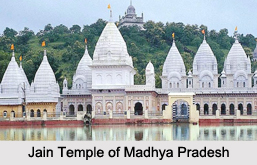 Jain temples throughout India are noted for their cleanliness and sacred atmosphere. Pilgrimage to sacred places is part of the tradition of Jainism religion in the world. Most of the great Jain pilgrimage sites are distant from the centres of population, almost always on the tops of hills or mountains, and often in surroundings of natural beauty conducive to devotion and meditation.
Jain temples throughout India are noted for their cleanliness and sacred atmosphere. Pilgrimage to sacred places is part of the tradition of Jainism religion in the world. Most of the great Jain pilgrimage sites are distant from the centres of population, almost always on the tops of hills or mountains, and often in surroundings of natural beauty conducive to devotion and meditation.
Jain Pilgrimages in Central Indian States
Some of the Jain Pilgrimages that are mentionable in the Central India are as follows:
There are huge statues at Gwalior in Madhya Pradesh of the 24 Jain Tirthankaras, whose teachings show the path to liberation from the cycle of birth. Cut into the rock face, the figures were carved in the 15th century and may have been designed to survive the end of the world.
In Madhya Pradesh, Digambara Jains are more prominent. They have left their imprint in several sacred sites of historical importance, as monuments and archaeological remains show.
Khajuraho and Deogarh have a special significance with regard to the history of art and architecture from the 9th century onwards.
Gwalior is known for its gigantic statues of Tirthankaras carved in the stone of the fort which demonstrates the Jain presence in the 15th century.
Mahavir Ji and Shivpuri are examples of two smaller sites that have gained wider exposure in recent times.
This article is a stub. You can enrich by adding more information to it. Send your Write Up to content@indianetzone.com




















